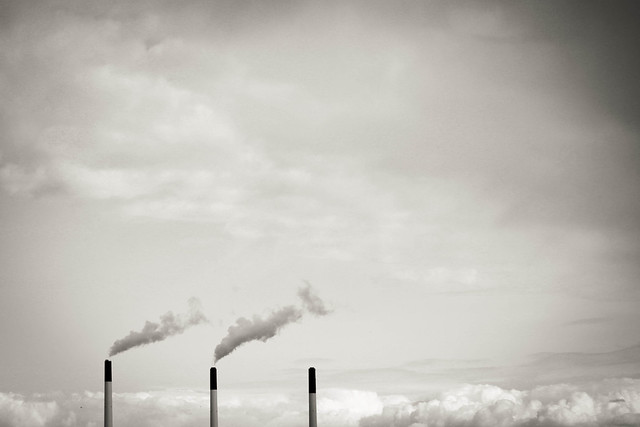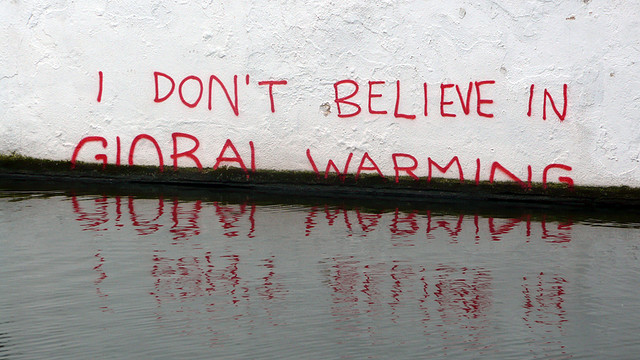Search Results for Tag: pik
Climate Change: The longer we wait the more expensive it will get.

The Potsdam Institute for Climate Impact Research (PIK) recently released a new study that offers two different and probably controversial results. At first the researches say that everything is going to be extremely expensive the longer we wait until political leaders get active. „Global economic growth would be cut back by up to 7 percent within the first decade after climate policy implementation if the current international stalemate is continued until 2030“, the paper says. That‘s an awful lot compared to the 2 percent that are expected if there‘s a climate agreement reached by 2015.
The researchers conclude that it is most relevant to not further postpone mitigation to keep climate targets (the 2 degrees above pre-industrial levels-target e.g.) in reach. “Economists tend to look at how things balance out in the long-term, but decision-makers understandably worry about additional burdens for the people and businesses they are responsible for right now. So increased short-term costs due to delaying climate policy might deter decision-makers from starting the transformation. The initial costs of climate policies thus can be more relevant than the total costs”, lead-author Gunnar Luderer says.
On the other hand Ottmar Edenhofer, he’s the co-author of the study and chief-economist of PIK, formulates a goal that could make it possible to keep the earth’s rising temperatures below the 2 degrees-target mentioned above. But his demands seem to be quite optimistic. At first, he said, a wordwide carbon trading system must reach prices for CO2 emission rights of 20 to 50 Euro (27 to 67 Dollar) per ton. That would be the only way to increase the price of fossil energy sources at a level that could force the industries to switch over to green energy alternatives. Here we should keep in mind that a ton of CO2 is currently traded at just about 3 Euro (4 Dollar) in Europe.
According to Edenhofer especially technologies for carbon dioxide removal from the atmosphere might be required in the future to reach the climate targets. This implies the use of bio-energy alongside wind or solar power, with plants consuming CO2, combined with carbon capture storage (CCS), storing underground the emissions from biomass combustion. The longer it takes to start climate policies the higher is the world’s reliance on these technologies will be, the study adds.
For the study the scientists produced 285 alternative climate change mitigation scenarios, with varying assumptions on the course of international climate negotiations on the one hand and on the other hand the availability of low carbon technologies from solar and wind power to bio-energy, CCS and energy efficiency. For the economic evaluation, they considered indicators like mitigation costs, energy prices or potential financial transfers induced by an international carbon market.
Sealevel rises quicker than expected

Many coastal cities, as for example Tokyo, will have to find a way to cope with rising sealevels (CC BY 2.0: oisa/flickr.com)
At the Doha climate change conference, delegates of the COP18 again try to find a practical way how to (further) reduce greenhouse gas emissions. The importance of this goal was again highlighted by a new study released recently by the Potsdam Institute of Climate Impact Research (PIK): Researchers found out that sealevel rose much quicker than projected by the latest IPCC report.
That’s what they saw when comparing the model calculation with real satellite data from 1990 to 2011. According to those satellite measurements, oceans are rising 60 percent faster than previously thought. In absolute numbers: the IPCC report from 2007 projected additional 2 mm sealevel per year, satellite data revealt a rate of 3.2 mm per year.
Which might seem less in numbers, can make a huge difference in reality. Already for the projected 2 mm, researchers warned this might lead to flood waters, more extreme storms, and salted ground water. Yet, nobody can forecast what exactly is to happen with a higher rate of sealevel rise. But nonetheless, threat for coastlines and megacities continues to increase. Especially if no reliable mechanism will be found to reduce CO2 emissions – as in consequence sealevels will rise by several meters at the end of this century.
What a +4° Celsius world would look like
 The next climate conference is to start in Doha, Quatar this Monday – but already before it is started, participating parties are not really optimistic about a practical outcome.
The next climate conference is to start in Doha, Quatar this Monday – but already before it is started, participating parties are not really optimistic about a practical outcome.
This is especially striking when set into relation with the urgence of the world’s situation: First opinions come up claiming [german languange link] that it is not realistic anymore to limit global warming to plus two degree Celsius when compared to predindustrial level.
In this context, the World Bank released a new report last week. Written by the Potsdam Institute of climate change, they again outline what is to happen with the worlds (eco)systems in a +2 degree-world – and forecast what is to happen in a +4-degree world.
Put in simple matters: Consequences of additional four degrees won’t just be an extension of what is felt at two degrees. Naively one could guess that as temperature doubles from two to four degrees, effects “double” as well. But that is not the case. They amplify even more intense.
To give you an impression of what to expect in a +4 degree world, we have summarized the most important facts.
![]() read more
read more
How animation films arouse attention for climate protection
THE HEAT from Aufgeheizt on Vimeo.
Project Aufgeheizt (“heated-up”) brought together scientists and animation film experts with around 30 young people in Berlin aged 12 – 18 to make short films explaining the impacts of climate change. On 2nd June 2012, as part of the programme for “Der L ange Nacht der Wissenschaft” (The Long Night of Science) at Potsdam Institute for Climate Impact Research, seven films were premiered in a klimakino (“climate -cinema”) and the following films were honoured in a prize giving ceremony:
- Geoengineering – overall best film
- “Aufgeheizt und weggespült” for the best/funniest storyline
- “Hilfe, Wasser!” for the most original set design
- “The Heat” – for the best special effects
- “Weniger Regen? Von wegen!” for the best character development
- “Eisschelf – De-iced” for die best dramatisation
- “Nordatlantische Strömungen” for the best cut and symbolic representation
Aufgeheizt is a pilot project funded by VW Stiftung to help scientists improve their communication about climate change with the general public. Organisations wishing to find out about future projects should contact Katie Griggs: k.griggs@aufgeheizt.org (EN or DE)
Cold spell boosts climate sceptics’ output of hot air
With winter temperatures across Europe dipping to long time lows, climate sceptics are on a roll. Just where is global warming? Fritz Vahrenholt is an example. A former top manager at one of Germany’s largest utilities companies, he is reported as feeling “duped on climate change”. Granted – hundreds of people frozen to death, temperatures below minus 20 degrees Celsius and snow on Mediterranean islands don’t intuitively go well together with the idea that the planet is warming.
Yet, scientists at the Potsdam Institute for Climate Impact Research (PIK) near Berlin are saying just that. And that’s not all. Their findings suggest that temperatures have dropped so low precisely because of global warming. What? Well, in simple terms, here’s what’s happening:
Oh, for a funny take on the same story – cold winters, hot doubts – check out this report by Comedy Central’s John Stewart:




Feedback